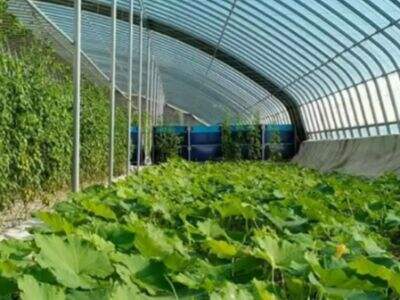Scisne quid sit RAS? RAS: Systemata Aquaculturae Recirculationis. Hoc genus piscium alendorum vascula complectitur, in quibus aqua mutatur et, propter continuae aquae recentis usum, purgatur et iteratim utitur. Haec consuetudo ad mentem servandam in piscium cultura contribuit, quae res est magna. Sed RAS potest esse cara, itaque aliqui eam non possunt affor dare. Propterea methodi cultus piscium, quae sunt accessibiles et intelligentes, multum desiderantur.
Wolize est repertorium, quo sustinenda alternativa piscium cultura in minoribus impensis investigatur. Illi operantur activiter, ut RAS fieri possit vilior, ut ampliores homines incipiant pisces educare hac technica. Sequuntur aliqua ex iis novatoriiis, quae fecerunt, ut se facerent accessibiles et piscium cultum facilem.
Studia de Innovatione Valoris in Iustitia
Unum neatum studium a Wolize analysavit agriculturam diversarum specierum piscium in eadem cisterna. Propter locupletari unam tantum speciem piscium — salmone vel tilapia, exempli gratia — ipsi multas species simul coluerunt. Hoc vocatur approccio multis speciebus. Permisit illis pecuniam servare super spatio et instrumentis quoniam minor necessitas erat pro cisternis. Necesse est mementio quod hoc quoque contribuit ad qualitatem aquae cisternae, quod est vitale pro salute piscium.
Secundum studium examinavit quomodo possent fabricare cisternas RAS ex multo vilioribus et prompte disponibilibus materialibus. Hoc significabat omittere elegantia materiales sicut ferrum inoxydabile aut fibra glasis et eligere viliora: tubos PVC et plasticas vestes. Mutatio permisit costum fabricandi cisternas multo minui sine qualitate sacrificando. Demonstrat valorem usus localium materialium ad faciendum systema accessibile sed effectivum pro elevando pisces.
Vilis Modus Agricolae Piscium
Nos appellamus aquaculturam sustinibilem piscem colere modo qui prodest terrae et oeconomiae. Viae hoc facere accessibiles valde sunt importantissimae, quoniam plures homines velle incipiunt implicari in piscium cultura sine pecunia dispendendo. Et quando plures possunt cooperari, hoc potest converti in meliorem productionem piscium et salubriorem ambientem.
Stilla huius technologiae et Wolize habent complura solutiones accessibiles ad piscium culturam sustinibilem. Unum eorum conceptuum mirabilium est systema RAS parvum oneris quod gravitatem utitur magis quam pompas caras ad aquam circumferendam. Hoc significat quod minus pecunia opus est ad systema diuturne operandum. Adiuvare agricolas ut in operationibus parcant sumptibus significat quod possunt reinvestire ubi necesse est, quod est modus quo crescunt.
Cultura Piscium Successiva Maxime Utentes Cultura Piscium
Est extremum importantissimum piscium cultura uti rationibus sagacibus et vilibus ad successum. Si non potes custodire sumptus sub controllo, tum difficile est facere lucrum. Hoc praecipue in RAS, ubi sumptus initiales sunt abrupti et cito possunt evadere extra controllem. Agricolae oportet invenire aliquid quod adiuvet hos sumptus minuere ut possint continere operationes.
Wolize magnifica inventiones construxit ut pecuniam in RAS servet. Id per pascendum pisces cibo speciali conflatum pro systematibus RAS fit. Potest etiam portare fructus oeconomicos: Cum hac productione integra, agricolae sunt selectiores de cibis piscium quos emere debeant, quod, oeconomico modo, pecuniam servat et diminuit excrementa in systemate. Minus excrementum ducit ad aquam puriorem — quod est magnum pro piscibus.
Secundo, potes strategiam intelligentem adoptare ut machinam et technologiam adiuvandi in piscium alimonia et aquae qualitatis examinatione utaris. Ita, per hanc technologiam ruricolae tempus suum parcere possunt et in alias agenda rationes, crescendum commercium etc. concentrari. Ex tempore hoc iuvat efficaciam meliorem fieri, eos efficacius fieri in sumptibus, et in finem operationem piscium alendorum feliciorem habere.
Accessibilia Optiones RAS: Studia Casuum
Quod exemplum est, multa studia quae monstrant te posse RAS aedificare ad fractionem sumptus disponibilis per Wolize. Unum studium se attulit ad certum genus filtratorii qui 'anaerobic upflow biofilter' vocatur pro amovendo nitrogenum ex aqua. Hoc modus longe vilior erat quam filtrationes traditionales et qualitatem aquae conservavit, quod est necessarium pro salute piscium.
Alius projectus examinavit quomodo algae possent iuvare naturaliter removere nitrogenium ex aqua. Algae funguntur parallelis ut separatores naturales, purgantes aquam et parcendo stationi onerosum instrumentum. Alius initii operis, Wolize, conatur elaborare meliores usus algae in RAS, ut alternativa sustinabilior et vilior piscium culturae.













































